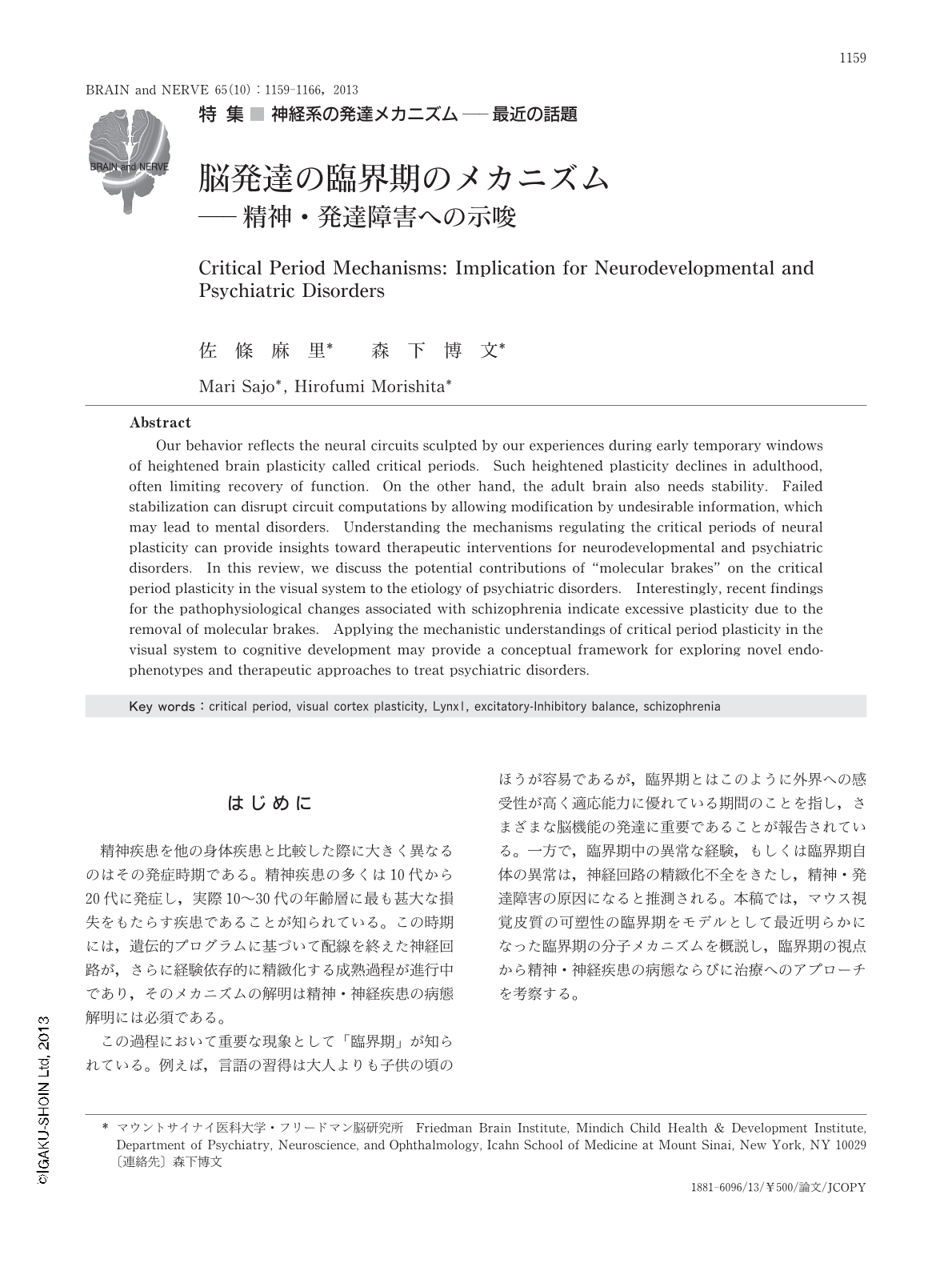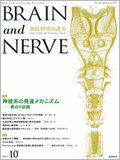Japanese
English
- 有料閲覧
- Abstract 文献概要
- 1ページ目 Look Inside
- 参考文献 Reference
はじめに
精神疾患を他の身体疾患と比較した際に大きく異なるのはその発症時期である。精神疾患の多くは10代から20代に発症し,実際10~30代の年齢層に最も甚大な損失をもたらす疾患であることが知られている。この時期には,遺伝的プログラムに基づいて配線を終えた神経回路が,さらに経験依存的に精緻化する成熟過程が進行中であり,そのメカニズムの解明は精神・神経疾患の病態解明には必須である。
この過程において重要な現象として「臨界期」が知られている。例えば,言語の習得は大人よりも子供の頃のほうが容易であるが,臨界期とはこのように外界への感受性が高く適応能力に優れている期間のことを指し,さまざまな脳機能の発達に重要であることが報告されている。一方で,臨界期中の異常な経験,もしくは臨界期自体の異常は,神経回路の精緻化不全をきたし,精神・発達障害の原因になると推測される。本稿では,マウス視覚皮質の可塑性の臨界期をモデルとして最近明らかになった臨界期の分子メカニズムを概説し,臨界期の視点から精神・神経疾患の病態ならびに治療へのアプローチを考察する。
Abstract
Our behavior reflects the neural circuits sculpted by our experiences during early temporary windows of heightened brain plasticity called critical periods. Such heightened plasticity declines in adulthood, often limiting recovery of function. On the other hand, the adult brain also needs stability. Failed stabilization can disrupt circuit computations by allowing modification by undesirable information, which may lead to mental disorders. Understanding the mechanisms regulating the critical periods of neural plasticity can provide insights toward therapeutic interventions for neurodevelopmental and psychiatric disorders. In this review, we discuss the potential contributions of "molecular brakes" on the critical period plasticity in the visual system to the etiology of psychiatric disorders. Interestingly, recent findings for the pathophysiological changes associated with schizophrenia indicate excessive plasticity due to the removal of molecular brakes. Applying the mechanistic understandings of critical period plasticity in the visual system to cognitive development may provide a conceptual framework for exploring novel endophenotypes and therapeutic approaches to treat psychiatric disorders.

Copyright © 2013, Igaku-Shoin Ltd. All rights reserved.


